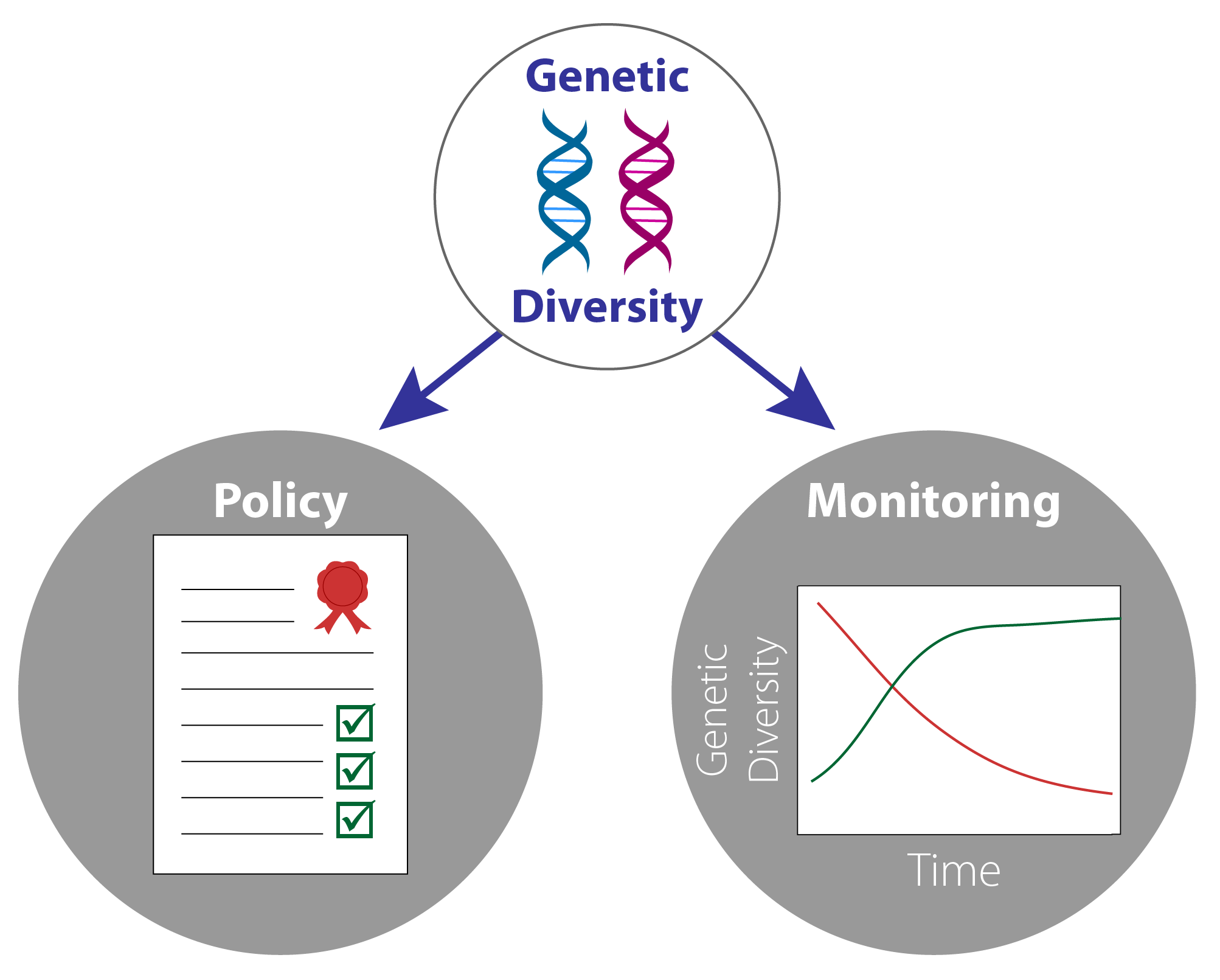Calling for Global Commitments to Conserve and Monitor Genetic Diversity
Written for a non-genetics audience, our article in BioScience provides background knowledge on why genetic diversity is important and how we can report on genetic diversity status and trends using indicators that do not rely on genetic data.
Our article in BioScience examines how global agreements can explicitly and comprehensively commit to strong goals, concerted action, and monitoring for genetic diversity. We highlight the current alarming loss of genetic diversity, and review monitoring tools and indicators to effectively incorporate genetic diversity under global policy frameworks. Successful regional policies protecting genetic diversity and adaptive processes exist, and are often achieved through international partnerships.
Diversity within species (genetic diversity) underlies species’ adaptation and survival, ecosystem resilience, and societal innovation. It is one of the three main pillars of biodiversity. However, global conservation policy has largely neglected protecting and monitoring genetic diversity. Ambitious and quantitative goals are lacking, while genetic erosion continues in both rare and common species.
“Now is a critical time to embrace transformational change in society’s relationship with nature, to conserve biodiversity, and to support resilient ecosystems.”
International biodiversity conservation instruments are currently being revised, meaning there is a unique opportunity to commit to action now. Priorities, goals, targets, and indicators are being drafted for 2020–2030 and beyond for the Convention on Biological Diversity (CBD) — the foremost global commitment.
Policies that aim for transformative change must fully acknowledge the crucial role of genetic diversity for nature and society, by committing to clear, measurable, and numerical genetic diversity goals. This means including practical genetic diversity indicators and increased genetic monitoring programs in global biodiversity commitments.
“A strong commitment to ambitious genetic diversity conservation is needed and is feasible.”
Recent advances in knowledge, technology, databases, practice, and capacity will enable countries to monitor, report on, and take action to maintain or restore genetic diversity. Reliable indicators based on proxies are available to effectively incorporate genetic diversity under global policy frameworks, while better infrastructure and technology will facilitate the collection, sharing, and interpretation of genetic data.
“With bold action, genetic diversity can be measured, tracked, and maintained for a resilient future.”

